The bull racing festival, part of the 'Ford Territory – Exploring the Mekong Delta, Heritage in Motion' journey, offers visitors a glimpse into the vibrant cultural identity and historical richness of this unique region.
Thúy Hằng
The bull racing festival is a famous event celebrated by the Khmer ethnic community in the Thất Sơn region of An Giang Province.
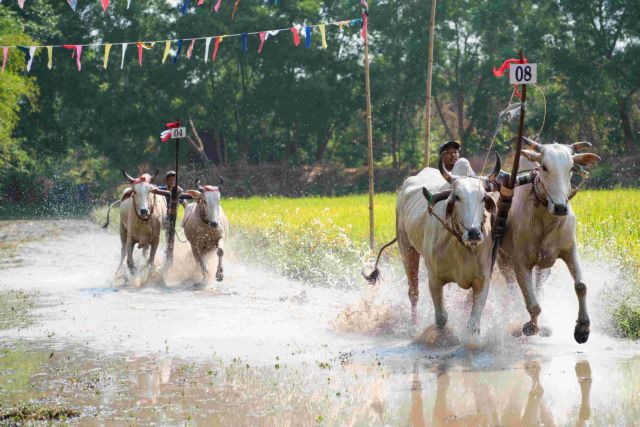
Bull racing is a festive tradition of Khmer people in Thất Sơn region in the southwestern province of An Giang. — VNS Photos by Thúy Hằng
According to legend, during ancient Sen Dolta seasons – a time dedicated to expressing gratitude and homage to ancestors, grandparents and the deceased – farmers brought their bulls to plow fields at Buddhist temples as an act of kindness. After completing their tasks, they organised races to test the bulls' strength, agility and endurance. Monks, captivated by the spectacle, rewarded the winners with colourful rattles or intricately crafted nose ropes. Over time, these races evolved into a cherished tradition in An Giang during this festive period.
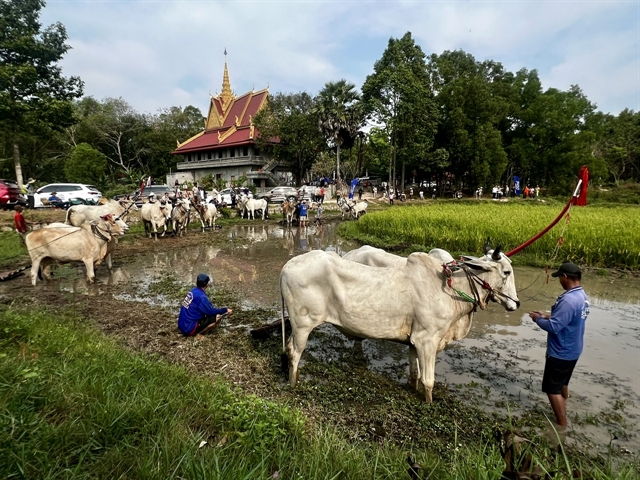
Bulls gather at the racecourse, a wet rice field next to the sacred Rô Pagoda, which serves as a spiritual anchor for the local Khmer community.
One of the most unique cultural traditions of the Khmer people and closely associated with the Sen Dolta Festival – the largest and most important traditional celebration of the Khmer – the race takes place every 8th lunar month.
However, I was fortunate enough to enjoy the jubilant atmosphere of muddy racetracks and cheer for the resilient bulls without waiting months. The 'Ford Territory – Exploring the Mekong Delta, Heritage in Motion' journey offered the chance to witness a reenactment of this exciting festival. Although scaled down, the recreated bull race maintained all the traditional rituals and was held at the Rô Pagoda in Tịnh Biên Town.
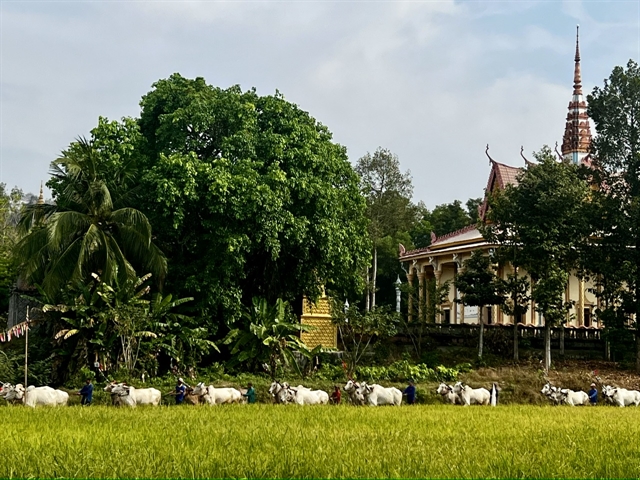
Pairs of bulls march before the race begins.
The racecourse, a wet rice field next to the sacred Rô Pagoda, serves as a spiritual anchor for the local Khmer community. While the official event during the 8th lunar month gathers dozens of bull pairs, the reenactment featured eight pairs, attracting eager spectators from nearby villages.
Before the race, bull owners presented offerings, including fruits like bananas and lucumas from their own gardens, to the land genies, seeking blessings for the bulls' health and success. Racers splashed water on the bulls to keep them cool under the scorching sun of the southwest region.
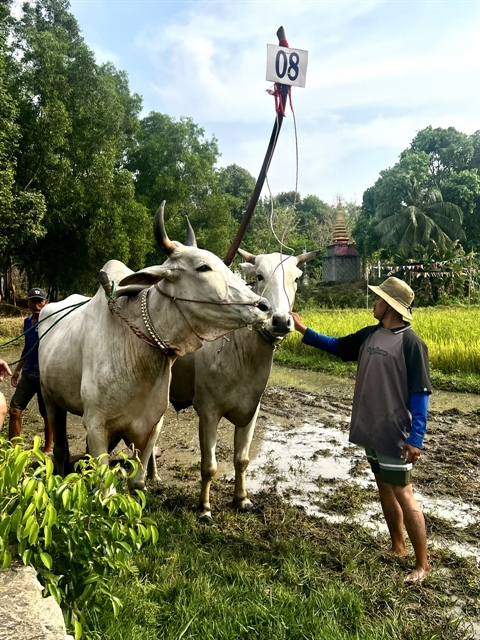
Bull racer Nguyễn Thanh Tùng cares for his bulls before the race begins.
Nguyễn Ngọc Mạnh, a seasoned racer with over three decades of experience, shared his methods for preparing the bulls for competition. For a month before the event, the animals are given fresh coconut water and one egg daily to build stamina and strength. Overfeeding is avoided to prevent weight gain, which could hinder speed.
The race begins with a procession of all bull pairs across the field, followed by playoff-style competitions. The first pair to cross the finish line moves on to the next round, edging closer to the championship. Teams are disqualified if their bulls step on an opponent's harrow or veer off the track.
Excitement peaks as the races start. The once-peaceful area buzzes with lively chatter about the competing bulls and cheers of encouragement. Some men even place bets on their favourites.
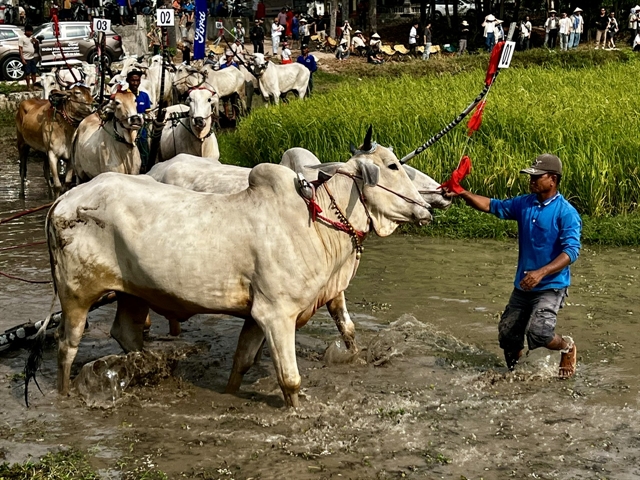
Winning cattle are considered a symbol of good fortune.
Nguyễn Thanh Tùng, a 33-year-old racer, explained the challenges of balancing on slippery harrows while controlling bulls that can reach speeds of 120km/h. Falling into muddy water and occasional injuries are unavoidable but accepted as part of the race.
While Tùng focused on preparing his bulls, Châu Khol, their owner, carefully observed. He had spent over VNĐ100 million (nearly US$4,000) to purchase the bulls, emphasising the importance of examining details like legs, hooves, coat, eyes and mouth to ensure health. Bulls with previous victories are especially valuable.
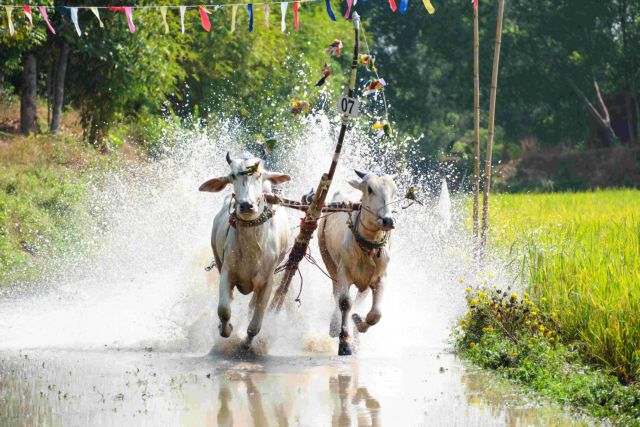
The bulls can run at speeds of up to 120km/h.
Among the spectators was Võ Văn Em, a local farmer who has honed his racing skills since he was 18, inspired by his father and grandfather. Although he didn’t compete, his passion brought him to the racecourse early to cheer on the contenders.
Winning bulls are regarded as symbols of good fortune. Instead of being sold or slaughtered, these champions are nurtured with care for future races, representing the Khmer people's hope for prosperity and abundance.
The reenacted festival, part of the 'Ford Territory – Exploring the Mekong Delta, Heritage in Motion' journey, offers visitors a glimpse into the vibrant cultural identity and historical richness of this unique region. — VNS